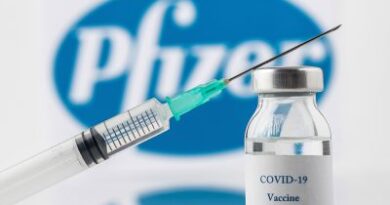Trusted institutions prevented understanding COVID’s origins – Powell Tribune
Facebook lifted its ban last month on discussing the COVID-19 lab origin hypothesis, meaning we are now free to share articles about and discuss it on the platform. This is the hypothesis that the pandemic that ravaged economies and killed 3.5 million people worldwide did not originate naturally from meat purchased from an open air market, but rather came from a lab in Wuhan, China.
A handful of articles proposed the idea as early as January 2020, but the following month the highly respected journal, the Lancet, published a letter by a group of virologists who argued that scientists “overwhelmingly conclude that this coronavirus originated in wildlife.” The letter condemned the lab origin hypothesis as purely a conspiracy theory.
Virologists in March 2020 published an opinion piece in Nature Medicine criticizing the hypothesis with a certainty that’s now being scrutinized. This article also had a lot of influence on the public refusal to consider the hypothesis.
What a difference a year makes.
Dr. Anthony Fauci, chief medical adviser to the president, said last month he’s “not convinced” the disease had natural origins, and President Joe Biden has called for an investigation of the Wuhan Institute of Virology (WIV), where the virus may have originated.
It should be noted that, while the hypothesis is no longer dismissed as a kooky conspiracy theory, it’s in no way proven true. The evidence supporting the lab origin hypothesis, however, is not the kind of connect-the-dots speculation that influential virologists dismissed early on as unscientific nonsense.
The letter in the Lancet was organized and drafted by the president of EcoHealth Alliance of New York, which funded research at the WIV. This would mean, if the lab origin hypothesis is true, the organization would have had some role in the origin of the pandemic. Despite this clear conflict of interest, the virologists concluded their Lancet letter with, “We declare no competing interests.”
The WIV was conducting what’s called gain-of-function experiments. These experiments deliberately make viruses more susceptible to human transmission, with the goal of getting ahead of natural outbreaks so we’re better prepared.
We know that a researcher at WIV set out to create novel coronaviruses with the highest possible infectivity for human cells because grants from the National Institutes of Health supported the research. So the grant applications are public record. The grants were managed by the president of the EcoHealth Alliance of New York.
In the fall of 2019, when the virus is believed to have started spreading, three researchers at the lab were treated for symptoms consistent with COVID-19. However, these symptoms are also consistent with seasonal illnesses.
The greater piece of evidence in support of the lab origin is in the anatomy of the virus itself, specifically with the furin cleavage site, which is a part of the virus that exerts great influence on its infectivity. A full discussion of why some research into this site suggests a lab origin, and why some research disputes it, gets highly technical.
It’s enough to say the science is far from settled, and the arguments supporting the lab origin thesis are not the musings of paranoid conspiracy theorists. They have a strong foundation in science. Science is supposed to be a self-correcting discipline. Why then weren’t virologists robustly debating the evidence on the virus’s origin?
There could be a number of reasons, but science writer Nicholas Wage, who has been covering the discussion on the lab origin hypothesis, points out that speaking against the status quo is a dangerous practice in today’s universities. “Careers can be destroyed for stepping out of line,” Wade writes.
The mainstream media dismissed the hypothesis, largely because the established experts were telling them wrongly it had no merits at all.
Not to blame him, but when former President Donald Trump touted the lab origin hypothesis in April 2020, the media’s rabid distrust of Trump only furthered its dismissal. It wasn’t until Biden and Fauci suggested the lab origin should be explored that the national press began reporting seriously on it. In other words, only when the status quo confirmed it was safe to ask the questions were they being asked.
Again, the evidence of a lab origin is no more conclusive than the evidence of a natural origin. We’ll have a hard time answering the question definitively until China is more transparent. The country has notoriously stymied efforts to investigate the lab.
The world could have been putting pressure on the secretive nation in the early part of the pandemic, and quite possibly by now we’d have more answers as to where this catastrophe originated.
Unfortunately, the institutions we rely on to make such investigations acted — deliberately in some cases — to preserve the status quo rather than the public good.
Researchers at universities should have been free to engage in the open spirit of scientific inquiry without fear of reprisals. Mainstream journalists should have acted with courage in scrutinizing official sources dismissing the hypothesis. Social media giants shouldn’t have been so quick to restrict what people can and can’t say on their platforms, and government institutions should have acted in the public interest.
At all levels, these institutions failed to explore a valid hypothesis or prevented others from doing so. This wasn’t because it was scientifically unsound, but rather because it was politically untenable. If the lab origin hypothesis is true and we don’t uncover how the virus was unleashed upon the human race, then history is just waiting to repeat itself.
*** This article has been archived for your research. Find the original article here ***



